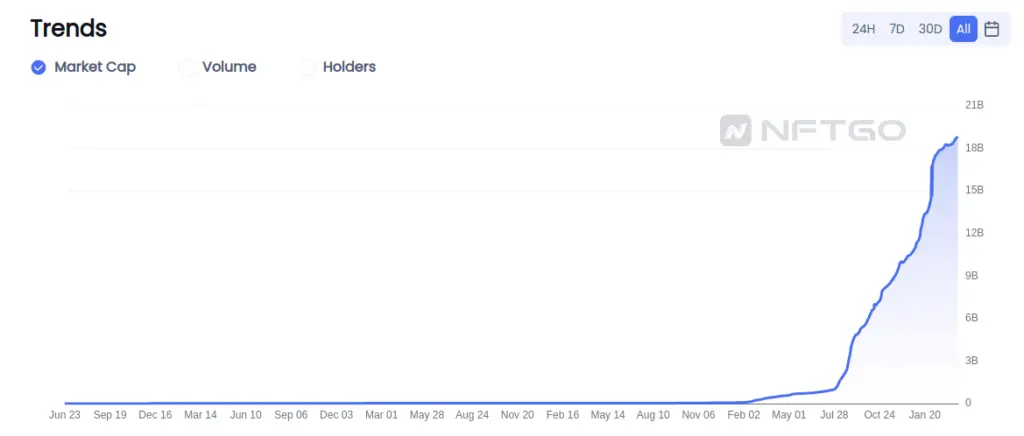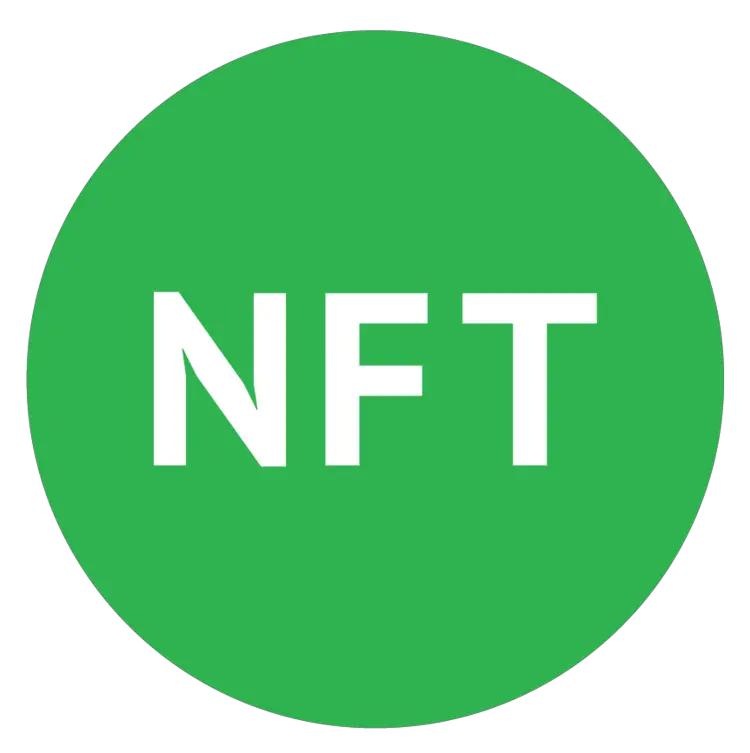NFT Marketplaces are a rapidly growing business model for buying and selling NFTs. NFT marketplaces are the way most people buy, sell, and mint NFTs (non-fungible tokens). But how do these marketplaces generate record-breaking revenue?
How exactly do NFT marketplaces Make Money? They charge transaction fees, typically around 2-5% of each sale. Some marketplaces also charge gas fees on top of the gas fees paid to miners for facilitating transactions.
There are a few other ways that NFT marketplaces make money, in this post we’ll explore the business model of NFT marketplaces and how they work.
NFT Marketplace Growth

Nong-fungible tokens (NFTs) have exploded in popularity since 2021. Since NFTs took off, there has been roughly $46 billion US dollars transacted for NFTS, all in less than two years. ($46,249,875,524.81 according to NFTgo to be exact)
And NFT marketplaces are the center of all this trading action. Marketplaces enable buyers, sellers, and creators to buy, sell, and mint all in one place.
The largest NFT marketplace OpenSea recently received a $13 billion dollar valuation and is made over $82 million in revenue in January 2022 with only 70 employees – according to Forbes. Let’s look at how these marketplaces are able to make record-breaking profits.
Ways NFT Marketplaces Make Money
Transaction fees
The primary method NFT marketplaces use to generate revenue is charging transaction fees. The fees vary but are typically around 2-5% per transaction.
Some marketplaces charge a transaction fee to the seller and the buyer, but most will only charge the buyer or deduct the fee from the listing price. There are also gas fees for transactions, but those fees typically go to miners for facilitating a transaction.
Listing fees
Some NFT marketplaces will charge fees for listing, minting, selling, exchanging, or removing your NFT from a marketplace. These fees can be added on top of the gas fees that you will already have to pay.
Be sure to check out the FAQ or docs of a marketplace before buying, selling, or minting.
Tokens
Some NFT marketplaces like Rarible and SuperRare have their own cryptocurrency tokens which are primarily used as governance or for rewarding users who transact on the marketplace or hold NFTs.
The founders of these marketplaces typically hold a large sum of tokens that they can sell at any time to generate additional revenue. Although this isn’t the preferred way to bring in revenue as it could result in the value of their token decreasing if they sell too much too quickly.
Examples Of How Popular NFT Marketplaces Make Money
How OpenSea makes money
OpenSea charges 2.5% per sale to the buyer. If you buy an NFT for 1 ETH on OpenSea, they would make 0.025 ETH. In January 2022 OpenSea transacted just under 5 billion Ethereum over 2,465,165 NFT sales and made $82 million in revenue. That is excluding Solana NFT sales and Polygon. The majority of OpenSea’s revenue comes from transaction fees.
OpenSea also has some other fees like account registration fees, where new sellers pay a one-time fee to enable selling on their accounts. OpenSea also charges a one-time contract approval fee for authorizing transactions for new sellers who want to mint an NFT. There are also Gas fees on OpenSea, but those are paid to miners and OpenSea does not generate revenue from Gas fees.
How Rarible Makes Money
Rarible charges 2.5% per transaction on both the buyer side and the seller side. If you buy an NFT for 1 ETH on Rarible, they would make 0.05 ETH.
Rarible offers a free minting option where the seller also pays for minting the NFT, but Rarible doesn’t profit off minting as those fees are paid to crypto miners.
Rarible also allows some NFTs to be purchased with credit cards, they do make revenue on credit card transaction fees.
Finally, Rarible has its own token, $RARI. While $RARI is primarily used for governance and paying those who transacted on the marketplace, Rarible could also generate revenue by exchanging $RARI.
How SuperRare Makes Money
SuperRare charges a 3% transaction fee paid by the buyer on all transactions. If you buy an NFT for 1 ETH on SuperRare, they would make 0.03 ETH.
SuperRare also has minting fees but they don’t profit off of them as they are paid out to miners for facilitating transactions.
SuperRare also has a token, $RARE used for governance and was issued to 7,500 of the early adopters of the platform including the founders. SuperRare could exchange $RARE token to generate revenue as well.
Factoring Fees Into NFT Transactions
Whether you’re buying, selling, or minting, there are going to be fees. It would help if you familiarized yourself with what you can expect to be charged on a specific platform for a particular transaction before you buy, sell, or mint.
For example, on OpenSea you can expect to pay a 2.5% transaction fee plus a gas fee. When you list, exchange, or remove your listing for your NFT you will also pay a gas fee for that.
Most marketplaces list their fees on their websites. Look for an FAQ page for fee details. You should also try to get an idea of how much you will pay in gas fees, which vary based on the current supply and demand of transactions vs available miners. Websites like Anyblock Dashboards can provide real-time estimates of gas fees for Ethereum. Try searching the web for gas fee analytics for the marketplace or cryptocurrency you plan on using before buying.

